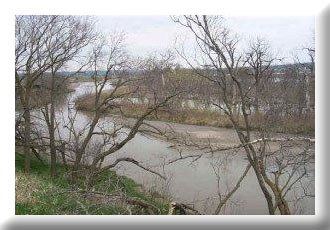
Objectives
- Use landcover-derived variables to identify ‘most significant’ watersheds and ecoregions in Missouri for non-point source pollution and for neotropical migratory bird conservation.
- Evaluate the degree of overlap in the high priority areas selected using watersheds versus ecoregions.
- Determine whether the results from ecoregions or from watershed analysis are more appropriate for setting conservation priorities.
MoRAP is attaching metrics generated from landcover to watershed and ecoregion polygons for the Glaciated Till Plains to test the validity of watersheds as a conservation assessment tool.
We showed that the same model for priority setting applied to different scales and types of polygons (large and small ecoregion and watershed polygons) result in different priority areas, and that land type association (ecoregion) polygons circumscribe more uniform landscapes in terms of landcover than 10-digit hydrologic unit (watershed) polygons. Smaller subdivisions of a landscape are more uniform than larger ones, so all else being equal, assessments using the smallest available uniform polygon coverage should result in the most spatially specific set of conservation priorities.
